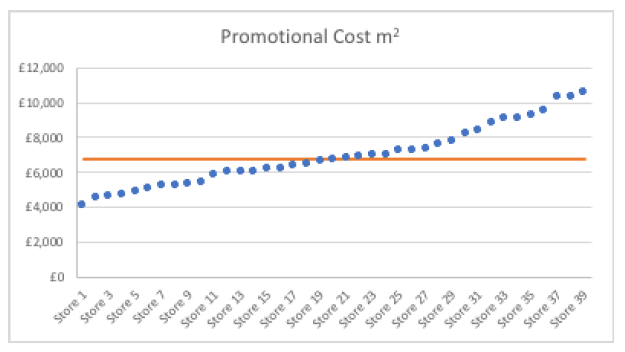Deposit return scheme: impact on small grocers
A report setting out a table of the values which have been derived and the approach that was taken to generating them.
Section 5: Other Points (outside the scope of the review)
During the review, other points were noted by the Sample stores that (although not part of the review's requirements) are nevertheless relevant to the bigger picture.
5.1 Costs of installation
During the review, the sample businesses were keen to understand the initial costs of set up and who would be responsible for these. Examples of these costs include:
- The initial cost of purchasing the machine.
- If installation of the DRS machine (or even more so a manual process) is near or part of the counter area, there would be a cost of redesign.
- If installation of the DRS machine (or manual process) is near a 'clean' area (for example a fresh food counter) additional costs would be needed for redesign and physical protection of the two areas from each other.
- Any installation or redesign would need to be out of hours and so overtime costs would be involved (as well as additional costs to keep the store open to the installers - light, manager on duty, etc.).
- Rejig costs would also be required - this being a shuffle of the existing sales areas to accommodate the DRS machine or manual process. For example, if the DRS machine was placed nearer the entrance door (replacing high profit items), these items may need to be relocated nearby, which in turn replaces the slightly less profitable items next to them, and so on - effectively re-shuffling all items from the front profitable area of the shop right through to the back of store.
- An additional cost for cabling a power supply to the machine would be required.
5.2 Additional on-going costs
During the review, the sample businesses were also keen to let us know that there would be additional on-going costs (additional to the loss of profit and staff costs detailed in section 2) that would have to be taken into account.
The Multiple Client estimated the following annual costs:
| General Repairs | 520 | £10 pw |
|---|---|---|
| Electricity | 520 | £10 pw |
| Insurance | 100 | Additional insurance cost of insuring the machine itself for damage |
| Waste Sacks | 1,040 | £20 pw |
| Cleaning Product | 250 | |
| Admin (controlling, monitoring and accounting) | 1,000 | |
| Total | 3,430 |
The cost of the machine (fully installed) was also noted. Estimating it to be (say) £15,000 which would be written off over (say) 5 years, adds a further depreciation cost each year of £3,000 (and interest costs should borrowing fund the purchase).
5.3 Return on Investment
Given the costs in section 2 (loss of profit and staff costs) and those additional ones in section 4, a return on investment could be derived.
At this stage, the amount that a store would receive per returned container under the DRS is yet to be established. However, the Multiple undertook a study during the meeting with the Edinburgh Numberworks which estimated this:
If 50% of the containers sold by a store were returned, the DRS would need to pay the Store 13.7 pence per container just for the store to break even (which includes all costs in sections 2 and 5). It used a sample of its top 39 largest stores to calculate this.
5.4 Location of a DRS Machine
The question of 'where' to locate a DRS machine was much discussed with all the sample stores. Originally, we had assumed that such a machine would be located in a less profitable area nearer the back of a store, but in fact the Sample Stores considered the 'customer journey' more important, explaining it as this:
A customer returning 'used' containers would want to off-load them first (and easily) before continuing their purchasing activities. In other words: customers want to "drop off, then buy".
Even if a customer had no further purchasing, the process should be made easy: 'nipping' into a store and off-loading easily, as opposed to (for example) carrying a box load of glass bottles though tight isles to the back of the store.
This consideration of the "customer experience" would more likely mean that a DRS machine (or manual process) be located nearer the front of the store, taking up more of the profitable areas, where Promotional Stock is displayed.
The cost per square metre of placing a DRS machine nearer the entrance to the store would be higher, simply because it would replace higher gross profit items. We refer to this higher cost as the promotional cost, which was calculated to be:
£6,812 per annum

5.5 Cost per m2 could be affected by other factors
The cost per m2 could well be affected by how well a particular store is performing. A busy store may have a higher cost per m2 than a quiet store since it's generating more gross profit each year. Similarly, a store with little local competition may be more profitable than one that needs to keep its selling prices low to compete.
The multiples for example benefit from central purchasing power, ensuring that their stock items cost less, so their gross profit is higher, and so the cost of replacing them with a DRS machine is higher.
So there are many store-specific factors which may affect the cost m2.
Contact
Email: eqce.cezw@gov.scot
There is a problem
Thanks for your feedback